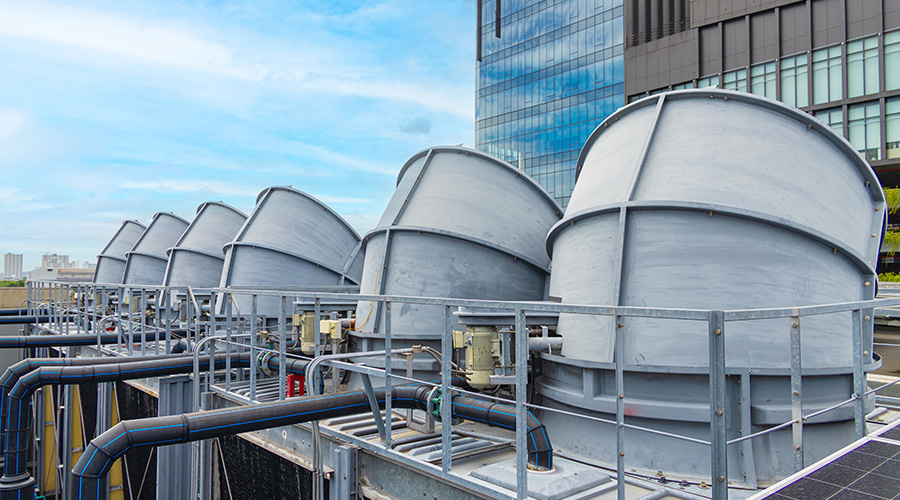Variable refrigerant flow (VRF) technology has become a popular option in recent years in institutional and commercial facilities addressing comfort and cost concerns in selecting air conditioning systems. For maintenance and engineering managers involved in the decision-making process, the technology can be challenging, according to an article from Facility Maintenance Decisions magazine on the FacilitiesNet website.
By understanding the technology and issues it presents related to design, construction, startup, and maintenance and operation, managers can ensure the investment in VRF technology pays the anticipated dividends related to occupant comfort, energy efficiency, and the bottom-line.
All-air space heating and cooling systems use refrigerant like a thermal sponge that gathers energy in one location and wrings it out in another. An array of options can perform this process. Traditional mechanical cooling applications consist of compressor systems using vapor-compression refrigeration technology with heat rejection and one terminal device, such as a blower coil or air handler.
VRF systems use multiple terminals connected to a similar compressorized apparatus. Large, central-station heating and cooling systems are economical in scale but can limit flexibility and become relatively costly when applied to smaller buildings with diverse or rapidly cycling heating and cooling loads.
Split systems with classical arrangements have one evaporator, condensing unit and pair of pipes for refrigerant vapor and liquid. Traditional systems suffer from limitations in piping length and pressure drop, relative positions of indoor and outdoor units, and confinement to the application of one low-side terminal unit. Operation in both heating and cooling is limited to relatively narrow ranges of conditions, and they present performance challenges when air entering the outdoor coil falls below 60 degrees for cooling and below 40 degrees for heating.
In the early 1980s, Asian manufacturers overcame the issues with complex split systems by adapting multiple conditioning terminals without complex charge management equipment to residential and hospitality applications. These companies also introduced heat pumps that could heat and cool simultaneously with one condensing unit. VRF became achievable on a small scale, and they were capable of long piping systems and extended operating ranges.
But the broader capabilities require innovations such as variable-speed compressors, refrigerant control manifolds, and additional piping for low-quality liquid. Digital controls now permit load anticipation, intelligent defrost controls, and terminal units with fans that reconfigure themselves to limit generation of noise in occupied areas.

 Mattresses Require Strict Care to Prevent Spread of Infections
Mattresses Require Strict Care to Prevent Spread of Infections Gardner Health Services Opens Alum Rock Health Center
Gardner Health Services Opens Alum Rock Health Center The Children's Center of Hamden Reports Data Security Incident
The Children's Center of Hamden Reports Data Security Incident Designing for Senior Care Communities Means Designing for Everyone
Designing for Senior Care Communities Means Designing for Everyone Harlem Hospital Legionnaires' Outbreak Highlights Cooling Tower Risks
Harlem Hospital Legionnaires' Outbreak Highlights Cooling Tower Risks